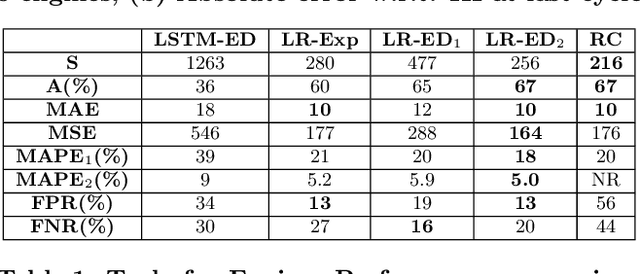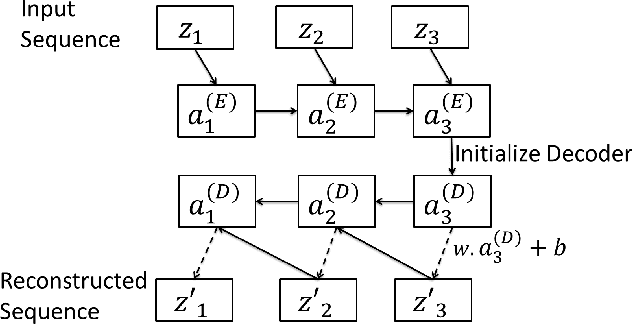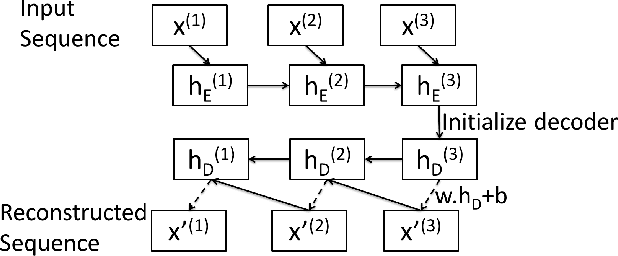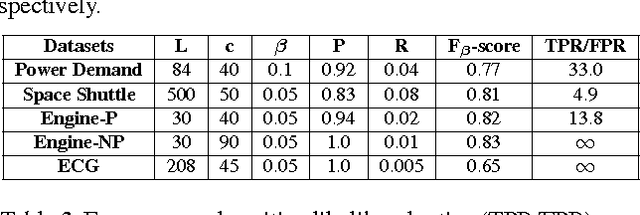Gaurangi Anand
Unsupervised Visual Time-Series Representation Learning and Clustering
Nov 19, 2021



Abstract:Time-series data is generated ubiquitously from Internet-of-Things (IoT) infrastructure, connected and wearable devices, remote sensing, autonomous driving research and, audio-video communications, in enormous volumes. This paper investigates the potential of unsupervised representation learning for these time-series. In this paper, we use a novel data transformation along with novel unsupervised learning regime to transfer the learning from other domains to time-series where the former have extensive models heavily trained on very large labelled datasets. We conduct extensive experiments to demonstrate the potential of the proposed approach through time-series clustering.
Delta Descriptors: Change-Based Place Representation for Robust Visual Localization
Jun 10, 2020



Abstract:Visual place recognition is challenging because there are so many factors that can cause the appearance of a place to change, from day-night cycles to seasonal change to atmospheric conditions. In recent years a large range of approaches have been developed to address this challenge including deep-learnt image descriptors, domain translation, and sequential filtering, all with shortcomings including generality and velocity-sensitivity. In this paper we propose a novel descriptor derived from tracking changes in any learned global descriptor over time, dubbed Delta Descriptors. Delta Descriptors mitigate the offsets induced in the original descriptor matching space in an unsupervised manner by considering temporal differences across places observed along a route. Like all other approaches, Delta Descriptors have a shortcoming - volatility on a frame to frame basis - which can be overcome by combining them with sequential filtering methods. Using two benchmark datasets, we first demonstrate the high performance of Delta Descriptors in isolation, before showing new state-of-the-art performance when combined with sequence-based matching. We also present results demonstrating the approach working with a second different underlying descriptor type, and two other beneficial properties of Delta Descriptors in comparison to existing techniques: their increased inherent robustness to variations in camera motion and a reduced rate of performance degradation as dimensional reduction is applied. Source code will be released upon publication.
Multi-Sensor Prognostics using an Unsupervised Health Index based on LSTM Encoder-Decoder
Aug 22, 2016



Abstract:Many approaches for estimation of Remaining Useful Life (RUL) of a machine, using its operational sensor data, make assumptions about how a system degrades or a fault evolves, e.g., exponential degradation. However, in many domains degradation may not follow a pattern. We propose a Long Short Term Memory based Encoder-Decoder (LSTM-ED) scheme to obtain an unsupervised health index (HI) for a system using multi-sensor time-series data. LSTM-ED is trained to reconstruct the time-series corresponding to healthy state of a system. The reconstruction error is used to compute HI which is then used for RUL estimation. We evaluate our approach on publicly available Turbofan Engine and Milling Machine datasets. We also present results on a real-world industry dataset from a pulverizer mill where we find significant correlation between LSTM-ED based HI and maintenance costs.
LSTM-based Encoder-Decoder for Multi-sensor Anomaly Detection
Jul 11, 2016



Abstract:Mechanical devices such as engines, vehicles, aircrafts, etc., are typically instrumented with numerous sensors to capture the behavior and health of the machine. However, there are often external factors or variables which are not captured by sensors leading to time-series which are inherently unpredictable. For instance, manual controls and/or unmonitored environmental conditions or load may lead to inherently unpredictable time-series. Detecting anomalies in such scenarios becomes challenging using standard approaches based on mathematical models that rely on stationarity, or prediction models that utilize prediction errors to detect anomalies. We propose a Long Short Term Memory Networks based Encoder-Decoder scheme for Anomaly Detection (EncDec-AD) that learns to reconstruct 'normal' time-series behavior, and thereafter uses reconstruction error to detect anomalies. We experiment with three publicly available quasi predictable time-series datasets: power demand, space shuttle, and ECG, and two real-world engine datasets with both predictive and unpredictable behavior. We show that EncDec-AD is robust and can detect anomalies from predictable, unpredictable, periodic, aperiodic, and quasi-periodic time-series. Further, we show that EncDec-AD is able to detect anomalies from short time-series (length as small as 30) as well as long time-series (length as large as 500).
 Add to Chrome
Add to Chrome Add to Firefox
Add to Firefox Add to Edge
Add to Edge